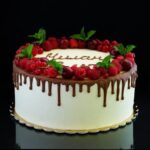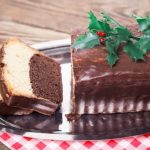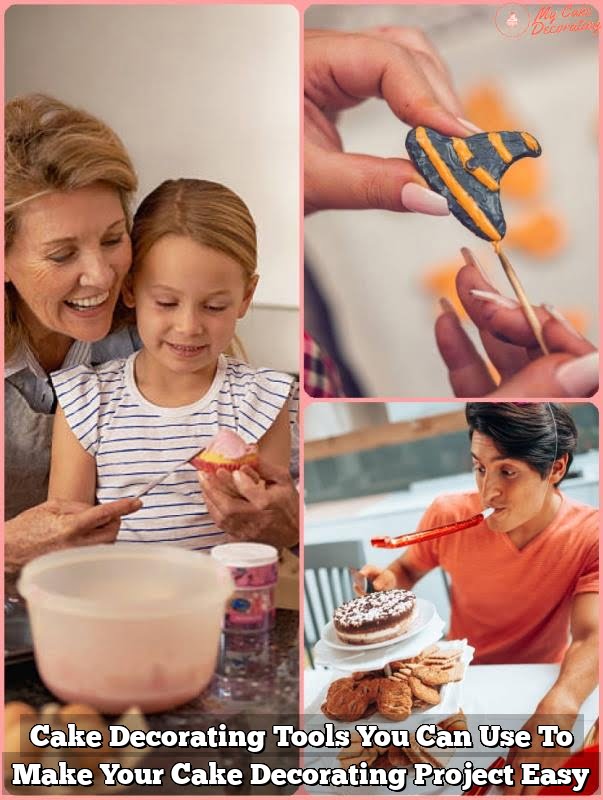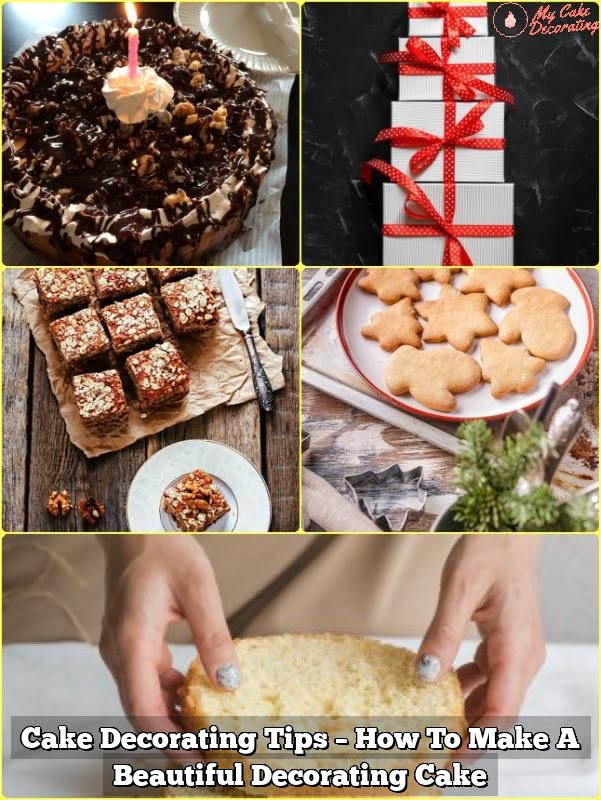Are you looking to take your cake decorating skills to the next level? Learning how to make a stencil for cake decorating can be a fun and creative way to add intricate designs and patterns to your sweet creations. Whether you’re a professional baker or just enjoy baking as a hobby, creating your own stencils can give your cakes a personalized touch that will impress your friends and family.
Stencils are a versatile tool in cake decorating, allowing for precise and repeatable designs to be added to fondant, buttercream, or other cake surfaces. They can be used to create beautiful borders, intricate patterns, or even personalized messages on cakes for any occasion. In this article, we’ll explore the purpose of stencils in cake decorating and provide a step-by-step guide on how you can create your very own custom stencils at home.
By understanding the fundamentals of using stencils in cake decorating and learning how to make them yourself, you’ll have the freedom to add unique and professional-looking designs to your cakes without expensive store-bought stencils. So grab your tools and let’s get started on creating stunning custom designs for your next cake.
Materials and Tools Needed for Making a Stencil for Cake Decorating
Creating your own stencil for cake decorating requires a few key materials and tools to ensure that you can achieve the design you want. Here are the essentials needed for making a stencil for cake decorating:
Materials
The primary material you will need for making a stencil is a sturdy, food-safe plastic sheet or paper. This will serve as the base for your stencil design and should be durable enough to withstand repeated use.
Other materials include a pencil for sketching out your design, an X-Acto knife or precision cutting tool for cutting out the stencil, and masking tape to hold the stencil in place while applying the design onto the cake.
Tools
In addition to the materials listed above, having a ruler or straight edge will help you create precise lines and shapes for your stencil design. A cutting mat is also recommended to protect your work surface and provide a good cutting area for creating intricate designs.
For more advanced designs, consider using specialty tools such as an airbrush kit or food coloring sprays. These tools can help you apply color to the stenciled design with greater control and precision.
By gathering these materials and tools, you’ll be well-equipped to begin creating custom stencils for elevating your cake decorating skills. Remember that practice makes perfect, so don’t be discouraged if it takes a few tries to get your stenciled designs just right.
Step-by-Step Guide on Creating Your Own Stencil for Cake Decorating
Creating your own stencil for cake decorating can add a personalized touch to your baked creations. With a few basic materials and some creativity, you can easily make custom stencils to fit the theme of any event or celebration. Follow these step-by-step instructions to create your own unique cake stencils.
Materials Needed
To create your own stencil for cake decorating, you will need the following materials:
- Stencil film or acetate sheets
- Craft knife or precision cutting tool
- Cutting mat
- Pencil or marker
- Design template or pattern
Step 1: Choose Your Design
The first step in creating a cake stencil is choosing a design or pattern that you want to transfer onto the cake. This could be anything from geometric shapes to intricate patterns or even personalized monograms. Once you have decided on a design, print it out or draw it on a piece of paper in the size that you want it to appear on the cake.
Step 2: Transfer the Design
Using a pencil, trace the chosen design onto the stencil film or acetate sheet. Make sure to press firmly enough so that the design transfers onto the material. If there are any intricate details in the design, take your time to ensure they are accurately transferred onto the stencil material.
By following these steps, you can create your very own custom stencils for cake decorating, allowing you to add a personal and professional touch to your baked creations. Once your stencil is ready, you can use it with various decorating techniques such as dusting with powdered sugar or cocoa, airbrushing, or using royal icing for elegant designs on cakes and other confections.
Tips and Tricks for Ensuring the Stencil Is the Right Size and Shape for the Cake
When creating a stencil for cake decorating, it is important to ensure that the design will fit perfectly onto the cake and that the edges of the stencil will align correctly. Here are some tips and tricks for ensuring the stencil is the right size and shape for the cake:
1. Measure the dimensions of your cake: Before creating your stencil, it’s important to know the exact dimensions of the cake you will be decorating. Use a ruler or measuring tape to determine the height and width of the cake so that you can adjust your stencil design accordingly.
2. Create a mock-up template: To ensure that the stencil will fit perfectly onto your cake, create a mock-up template using paper or cardboard. This will allow you to make any necessary adjustments to the size and shape of the stencil before using it on your actual cake.
3. Use flexible materials: When making your stencil, consider using flexible materials such as plastic or acetate sheets. These materials can easily conform to the shape of the cake, ensuring a clean and precise application of the design onto the surface.
By following these tips and tricks, you can ensure that your homemade stencil will be the perfect size and shape for decorating your cake, resulting in a professional-looking and visually appealing final product. Now that you have perfected your stencil size and shape, it’s time to explore different techniques for applying stenciled designs onto cakes.
Using Different Techniques to Apply the Stenciled Design Onto the Cake
After creating your homemade cake stencil, the next step is to apply the stenciled design onto the cake. There are several techniques you can use to achieve this, depending on the desired outcome and the type of icing or frosting you are working with. One popular method is using a powdered sugar or cocoa powder to dust the stencil onto the cake. This technique works well for lightly colored buttercream or fondant-covered cakes.
Another technique involves using an offset spatula to spread a thin layer of icing over the stencil placed on the cake. Once you remove the stencil, you will be left with a raised, textured pattern on the cake’s surface. This method is great for adding dimension and visual interest to your designs.
For those working with royal icing, you can use a small spatula or palette knife to carefully spread and smooth out the icing over the stencil. Be sure to work quickly and gently lift off the stencil to reveal a crisp, clean design on your cake.
| Stenciling Technique | Ideal Icing/Frosting Type |
|---|---|
| Powdered Sugar/Cocoa Powder Dusting | Buttercream or Fondant-covered Cakes |
| Offset Spatula Technique | All types of Icing/Frosting |
| Royal Icing Spreading | Royal Icing Cakes |
Whichever method you choose, it’s essential to handle the stencil carefully and avoid shifting it while applying pressure, as this could cause smudging or distortion of your design. Practice on a spare piece of material before moving on to your actual cake to ensure that you have mastered your chosen technique. With patience and practice, you can achieve professional-looking stenciled designs that will impress your friends and family.
Cleaning and Maintaining the Stencil for Future Use
Once you have finished using your homemade stencil for cake decorating, it is important to properly clean and store it to ensure its longevity and future use. The first step in maintaining your stencil is to gently wash it with warm soapy water, being careful not to bend or damage any delicate parts of the design. Use a soft brush or sponge to remove any remaining frosting or food particles, and then rinse thoroughly with clean water.
After washing, allow the stencil to air dry completely before storing it away. It is essential that the stencil is completely dry to prevent any mold or bacteria growth. Once dry, store the stencil flat in a cool, dry place – preferably between two pieces of cardboard or in a plastic sheet protector to prevent bending or warping.
Regular maintenance also plays a key role in prolonging the life of your cake decorating stencil. Avoid using sharp objects that can scratch or tear the material, and periodically inspect the stencil for any signs of damage such as cracks or tears. With proper cleaning and maintenance, your homemade cake decorating stencil can be used repeatedly for various designs and patterns on your baked creations.
| Stenciling Tips | Cleaning and Maintenance Tips |
|---|---|
| Avoid using too much frosting when stenciling | Gently wash with warm soapy water |
| Use a spatula or scraper to smooth out the frosting over the stencil | Allow stencil to air dry completely before storing |
| Experiment with different colors and textures when stenciling designs onto cakes | Avoid using sharp objects on stencils that can cause scratches or tears |
Ideas for Creative Designs and Patterns to Use With Homemade Cake Stencils
When it comes to cake decorating, the possibilities are endless when using homemade stencils. Creating your own stencil opens up a world of creativity and allows you to add your personal touch to your cakes. Here are some ideas for creative designs and patterns to use with homemade cake stencils:
- Floral Patterns: Flowers are a classic and beautiful choice for cake designs. With a homemade stencil, you can create intricate floral patterns such as roses, daisies, or even tropical blooms.
- Geometric Shapes: Geometric designs are modern and chic, making them perfect for contemporary cake designs. Use your homemade stencil to create shapes like triangles, hexagons, or chevron patterns.
- Monograms and Initials: Personalize your cakes by incorporating monograms or initials into the design. A homemade stencil allows you to easily add these special touches to your creations.
Additionally, consider experimenting with different textures and themes such as lace, abstract art, or even holiday-inspired designs. The versatility of homemade stencils means that the options are truly endless, allowing you to create unique and stunning cakes for any occasion.
Using custom stencils adds a professional and polished look to your cake decorating projects. Whether you’re creating a birthday cake, wedding cake, or simply want to elevate your baking skills, incorporating homemade stencils into your designs is an excellent way to showcase your creativity and style.
Conclusion
In conclusion, creating your own custom stencils for cake decorating is a fun and creative way to elevate your skills in the kitchen. By understanding the purpose of stencils in cake decorating and following a step-by-step guide, you can easily make personalized designs and patterns for your cakes. With just a few materials and tools, you can unleash your creativity and take your cake decorating to the next level.
Additionally, ensuring that the stencil is the right size and shape for the cake is crucial in achieving professional-looking results. Taking the time to clean and maintain your homemade stencil will also ensure its longevity for future use. By experimenting with different techniques for applying the stenciled design onto the cake, you can achieve unique and eye-catching decorations that will impress your friends and family.
Finally, don’t be afraid to explore different creative designs and patterns to use with homemade cake stencils. Whether it’s floral motifs, intricate lace patterns, or even personalized monograms, custom stencils give you endless possibilities to make your cakes stand out. So go ahead, grab some materials, follow the steps outlined in this article, and start creating beautiful custom stencils for your next baking project.
Frequently Asked Questions
Can I Make My Own Cake Stencil?
Yes, you can definitely make your own cake stencil. All you need is some sturdy paper or plastic material, a pair of scissors, and a craft knife. You can either draw the design directly onto the material or print it out and then cut it out carefully to create your own custom stencil for decorating cakes.
What Material Is Used for Cake Stencils?
Cake stencils are typically made from food-safe materials such as plastic or acetate sheets. These materials are easy to clean and reusable, making them perfect for creating intricate designs on cakes with icing or powdered sugar. Some stencils may also be made from thin metal or silicone for more detailed or delicate patterns.
How Do You Make Homemade Stencils?
Making homemade stencils is quite simple and only requires a few basic supplies. You can use items like cardboard, acetate sheets, plastic folders, or even freezer paper as your stencil material.
Simply draw or print out your desired design, carefully cut it out with a craft knife, and then use your homemade stencil to decorate cakes, walls, furniture, or any other surface you wish to embellish with a pattern.

Welcome to my blog about home and family. This blog is a place where I will share my thoughts, ideas, and experiences related to these important topics. I am a stay-at-home mom with two young children. I hope you enjoy reading it! and may find some helpful tips and ideas that will make your home and family life even better!





